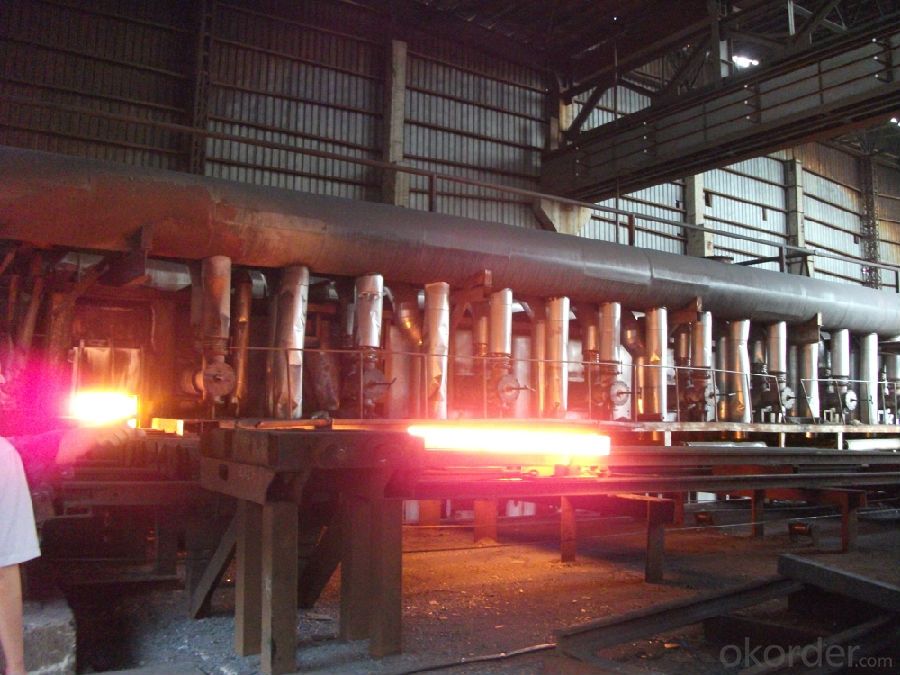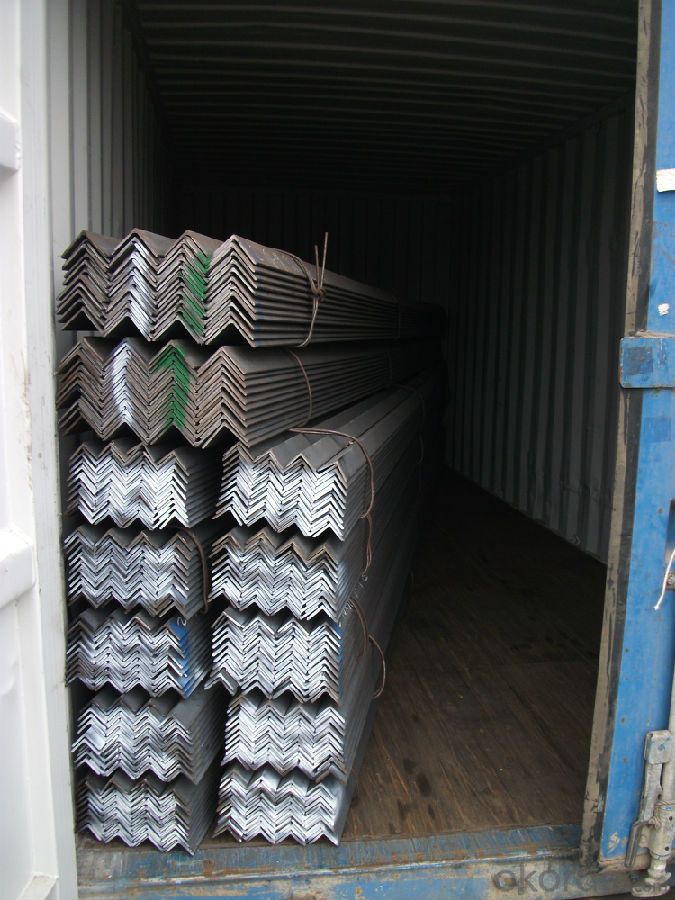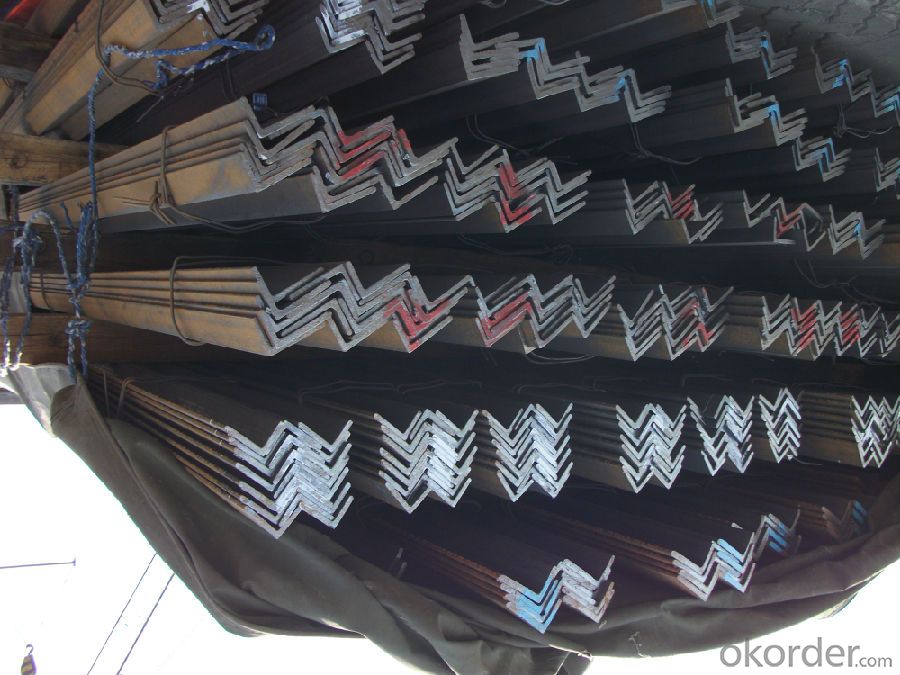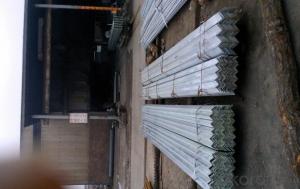A20X20X2.5 Equal steel angle for construction
- Loading Port:
- Tianjin
- Payment Terms:
- TT or LC
- Min Order Qty:
- 25 m.t.
- Supply Capability:
- 100000 m.t./month
OKorder Service Pledge
OKorder Financial Service
You Might Also Like
Product Description:
OKorder is offering A20X20X2.5 Equal steel angle for construction at great prices with worldwide shipping. Our supplier is a world-class manufacturer of steel, with our products utilized the world over. OKorder annually supplies products to European, North American and Asian markets. We provide quotations within 24 hours of receiving an inquiry and guarantee competitive prices.
Product Applications:
A20X20X2.5 Equal steel angle are ideal for structural applications and are widely used in the construction of buildings and bridges, and the manufacturing, petrochemical, and transportation industries.
Product Advantages:
OKorder's Equal steel angle are durable, strong, and resist corrosion.
Main Product Features:
· Premium quality
· Prompt delivery & seaworthy packing (30 days after receiving deposit)
· Corrosion resistance
· Can be recycled and reused
· Mill test certification
· Professional Service
· Competitive pricing
Product Specifications:
Specifications of JIS SS400 Angle Steel
1.Standards:GB,ASTM,BS,AISI,DIN,JIS
2.Invoicing on theoretical weight or actual weight as customer request
3.Material: JIS G3192,SS400;SS540.
4. Payment terms:
1).100% irrevocable L/C at sight.
2).30% T/T prepaid and the balance against the copy of B/L.
3).30% T/T prepaid and the balance against L/C
5.Sizes:
Trusses;
Transmission towers;
Telecommunication towers;
Bracing for general structures;
Stiffeners in structural use.
Packaging & Delivery of Angle Steel
1. Transportation: the goods are delivered by truck from mill to loading port, the maximum quantity can be loaded is around 40MTs by each truck. If the order quantity cannot reach the full truck loaded, the transportation cost per ton will be little higher than full load.
2. With bundles and load in 20 feet/40 feet container, or by bulk cargo, also we could do as customer's request.
3. Marks:
Color mark: There will be color marking on both end of the bundle for the cargo delivered by bulk vessel. That makes it easily to distinguish at the destination port.
Tag mark: There will be tag mark tied up on the bundles. The information usually including supplier logo and name, product name, made in China, shipping marks and other information request by the customer.
If loading by container the marking is not needed, but we will prepare it as customer request.
Production flow of Angle Steel
Material prepare (billet) —heat up—rough rolling—precision rolling—cooling—packing—storage and transportation



FAQ:
Q1: How do we guarantee the quality of our products?
A1: We have established an advanced quality management system which conducts strict quality tests at every step, from raw materials to the final product. At the same time, we provide extensive follow-up service assurances as required.
Q2: How soon can we receive the product after purchase?
A2: Within three days of placing an order, we will begin production. The specific shipping date is dependent upon international and government factors, but is typically 7 to 10 workdays.
- Q:What are the limitations of using steel angles?
- There are several limitations associated with the use of steel angles in various applications. Firstly, steel angles have a limited load-bearing capacity. The weight and pressure that can be safely supported by a steel angle are determined by its size, shape, and material composition. If the load exceeds the weight-bearing capacity of the angle, it can lead to structural failure or deformation. Secondly, steel angles are susceptible to corrosion. They are typically made of carbon steel, which can rust over time when exposed to moisture or corrosive environments. This corrosion weakens the structural integrity of the angle, reducing its lifespan and potentially compromising the overall stability of the structure it supports. Additionally, steel angles may have limitations in terms of their flexibility and versatility. Due to their fixed shape and size, they may not be suitable for applications that require intricate or complex designs. In such cases, alternative materials or fabrication methods may be more appropriate. Another limitation of steel angles is their limited resistance to fire. Steel, including steel angles, loses its strength and structural integrity at high temperatures. In the event of a fire, steel angles may not be able to withstand the heat and can deform or collapse, jeopardizing the safety of the structure and its occupants. Lastly, steel angles can be challenging to work with during installation or modification. Their rigid nature may require specialized tools, equipment, or expertise for cutting, drilling, or welding. This can add to the overall cost and time required for construction or renovation projects. Despite these limitations, steel angles remain widely used in various industries due to their affordability, durability, and versatility within their design limits. However, it is essential to consider these limitations and evaluate the specific requirements of each application to determine if steel angles are the most suitable choice.
- Q:What are the typical lengths of steel angles?
- The typical lengths of steel angles vary depending on their intended use and application. However, steel angles are commonly available in standard lengths of 20 feet or 6 meters. These standard lengths are often preferred by manufacturers and construction companies due to their convenience and ease of transportation. Additionally, steel angles can be custom cut to specific lengths as per the requirements of a particular project.
- Q:How do you prevent warping of steel angles during fabrication?
- To prevent warping of steel angles during fabrication, several measures can be taken. Firstly, it is essential to ensure proper storage and handling of the angles to avoid any bending or twisting. During welding or heating processes, it is crucial to control the temperature and heat distribution evenly to prevent localized expansion or contraction that may lead to warping. Additionally, using proper clamping or fixturing techniques can help maintain the desired shape and prevent warping. Lastly, post-fabrication processes like stress relieving or annealing can be employed to release any residual stresses in the angles and minimize the risk of warping.
- Q:How do you store and handle steel angles?
- Steel angles should be stored in a well-ventilated, dry area to prevent rusting. They should be stacked and supported properly to avoid distortion or damage. When handling steel angles, it is important to use appropriate lifting equipment and techniques to ensure safety. Additionally, they should be protected from scratches or dents during transportation and regular inspections should be conducted to identify any issues.
- Q:What are the common methods of surface finishing for steel angles?
- Steel angles can be surface finished in various ways to achieve specific aesthetic and functional properties. The following methods are commonly used: 1. Paint application: To protect against corrosion and enhance appearance, a protective coat of paint is applied to the steel angle. Different types of paint, like epoxy, acrylic, or powder coatings, are chosen based on specific needs. 2. Galvanization: This method involves immersing the steel angle in molten zinc to create a protective layer on its surface. Galvanization is particularly effective for steel angles exposed to harsh environments or outdoor use. 3. Powder coating: In this process, a dry powder is electrostatically sprayed onto the steel angle and then cured in an oven. The result is a durable finish that resists chipping, fading, and corrosion. Powder coating is preferred when a thicker, more robust finish is desired. 4. Anodizing: Although mainly used for aluminum, anodizing can also be applied to steel angles. It creates an oxide layer on the surface through an electrochemical process, providing increased corrosion resistance and the option to add color. 5. Shot blasting: This surface preparation technique involves bombarding the steel angle with small steel shots at high velocity. Shot blasting removes rust, mill scale, and other impurities, leaving the surface clean and prepared for further finishing processes. 6. Polishing: This technique mechanically smooths and shines the steel angle's surface, achieving a reflective, mirror-like finish or removing imperfections. These methods offer different advantages and are suitable for various applications. The choice of method depends on factors such as desired appearance, environmental conditions, and specific performance requirements.
- Q:Are steel angles readily available in the market?
- Indeed, the market offers a wide array of readily available steel angles. These angles, which are commonly utilized in diverse construction and manufacturing undertakings, are abundantly stocked by steel suppliers, metal fabricators, and construction material stores. To cater to different project specifications, steel angles come in an assortment of sizes, shapes, and grades. Whether you require a few for a do-it-yourself venture or a substantial quantity for a commercial construction endeavor, procuring steel angles from the market is a hassle-free endeavor.
- Q:Are steel angles prone to warping or twisting?
- Steel angles are generally not prone to warping or twisting. They are widely used for various structural and manufacturing purposes due to their excellent strength and stability. Steel angles are produced through a hot-rolling process, which involves heating the steel billet to a high temperature and then shaping it into the desired angle shape. This process helps to ensure the angles retain their shape and structural integrity. However, it is important to note that under extreme heat or stress conditions, steel angles can potentially warp or twist. This is more likely to occur if the steel angles are exposed to high temperatures, uneven heating or cooling, excessive loads, or improper installation. In such cases, the integrity of the angles may be compromised, leading to deformation. To minimize the risk of warping or twisting, it is crucial to follow proper handling and installation procedures, including ensuring even distribution of loads and avoiding excessive heat exposure. Additionally, using high-quality steel angles from reputable manufacturers and conducting regular inspections can help identify any potential issues early on and prevent further damage. Overall, while steel angles are generally resistant to warping or twisting, it is important to consider the specific conditions and factors that may affect their stability and take appropriate measures to ensure their long-term structural integrity.
- Q:Can steel angles be used for framing?
- Framing in construction projects can indeed utilize steel angles. These L-shaped metal profiles, also known as angle irons, possess remarkable strength and durability. Their structural stability and capacity to bear heavy loads make them widely employed for framing purposes. Steel angles can be easily manipulated through cutting, welding, and bolting to generate robust frames for diverse structures like buildings, bridges, and industrial facilities. They commonly serve as vertical or horizontal supports, bracing elements, or lintels to ensure stability and structural integrity. Moreover, steel angles can be galvanized or coated to enhance their resistance to corrosion, rendering them suitable for both indoor and outdoor framing applications. In conclusion, steel angles represent a versatile and dependable option for framing in construction projects.
- Q:Can steel angles be recycled or reused?
- Yes, steel angles can be recycled or reused. Steel is a highly recyclable material, and steel angles can be melted down and used to produce new steel products. Additionally, steel angles can also be reused in various construction projects, as their durability and strength make them suitable for multiple applications.
- Q:Can steel angles be used in temporary or modular structures?
- Yes, steel angles can be used in temporary or modular structures. Steel angles provide structural support and stability, making them suitable for various construction applications, including temporary or modular structures. They can be easily fabricated and assembled, offering flexibility and durability required for such structures.
1. Manufacturer Overview |
|
|---|---|
| Location | |
| Year Established | |
| Annual Output Value | |
| Main Markets | |
| Company Certifications | |
2. Manufacturer Certificates |
|
|---|---|
| a) Certification Name | |
| Range | |
| Reference | |
| Validity Period | |
3. Manufacturer Capability |
|
|---|---|
| a)Trade Capacity | |
| Nearest Port | |
| Export Percentage | |
| No.of Employees in Trade Department | |
| Language Spoken: | |
| b)Factory Information | |
| Factory Size: | |
| No. of Production Lines | |
| Contract Manufacturing | |
| Product Price Range | |
Send your message to us
A20X20X2.5 Equal steel angle for construction
- Loading Port:
- Tianjin
- Payment Terms:
- TT or LC
- Min Order Qty:
- 25 m.t.
- Supply Capability:
- 100000 m.t./month
OKorder Service Pledge
OKorder Financial Service
Similar products
New products
Hot products
Related keywords



























